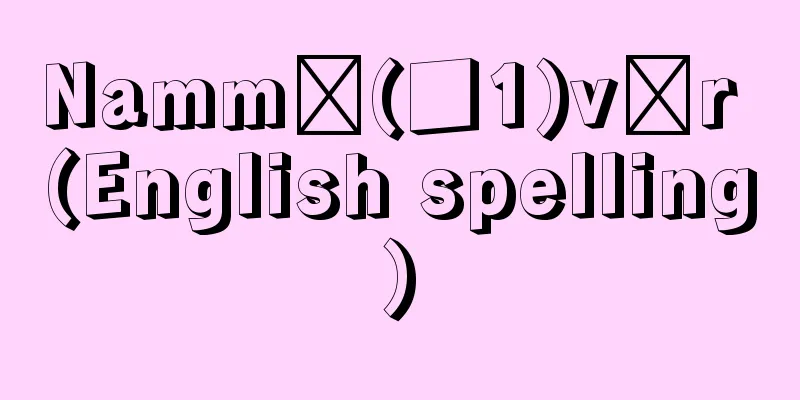Iwasa Katsumochi

|
Year of death: June 22, 1650 (July 20, 1650) Year of birth: Tensho 6 (1578) A painter from the early Edo period. Also known as Matabei, and given the pen names Hekatsumiya and Doun. He was the youngest son of Araki Murashige, lord of Itami Castle in Settsu Province (Osaka Prefecture). In 1579, his clan was annihilated by Oda Nobunaga, but the two-year-old Katsui was rescued and later grew up taking his mother's surname, Iwasa. He gave up on reviving the military lineage and chose to make a living as a painter. During the Genna era (1615-24), he moved to Kitanosho in Echizen (Fukui Prefecture), where he worked under Matsudaira Tadanao and Tadamasa, honing his artistic talent. In 1637, he was ordered by the shogun's family to leave his wife and children in Fukui and travel to Edo. The travelogue he wrote about during this time is called "Kaikoku Do no Ki." Between Kan'ei 15 and 17, he created furnishings for the wedding of Shogun Iemitsu's daughter Chiyohime to Tokugawa Mitsutomo of the Owari clan. He also painted the "Picture of the Thirty-six Immortal Poets" (stored at Kawagoe Toshogu Shrine) which was dedicated to Kawagoe Toshogu Shrine on June 17, 1632, and continued his busy creative endeavors in Edo. It is not clear from whom he learned painting, but one theory is that Kano Naizen was his first teacher. As Naizen's father was a retainer of Araki Murashige, this theory is highly credible. However, Matabei himself called himself a "straight out of the Tosa Mitsunobu school" (inscription on the "Picture of the Thirty-six Immortal Poets" at Kawagoe Toshogu Shrine), and as he possessed the Yamato-e style of painting, it is possible that he studied under the Tosa school of the time. In any case, Matabei's style, which was well versed in various Japanese and Chinese painting techniques, was original and stood out even among the art circles of the time. His representative works include "Court Ladies Admiring Chrysanthemums" (Yamatane Museum of Art), "Azusa Bow", "Portraits of People from Japanese and Chinese Stories" (Fukui Prefectural Museum of Art), and "Portraits of Hitomaro and Tsurayuki" (MOA Museum of Art). In addition, a group of unique, highly colorful old Joruri picture scrolls such as "Yamanaka Tokiwa" and "Kami Ruri" (both in the MOA Museum of Art), and "Horie Monogatari" (Kosetsu Museum of Art) are also thought to have been created by Matabei or the studio he supervised. <References> Tsuji Tsuneo, "Iwasa Matabei" (Complete Collection of Japanese Art Paintings, Vol. 13) (Satoru Sakakibara) Source: Asahi Japanese Historical Biography: Asahi Shimbun Publications Inc. About Asahi Japanese Historical Biography |
|
没年:慶安3.6.22(1650.7.20) 生年:天正6(1578) 江戸前期の画家。別名を又兵衛,号は碧勝宮,道蘊とも称した。摂津国(大阪府)伊丹城主荒木村重の末子。天正7(1579)年,一族は織田信長によって滅ぼされたが,2歳の勝以は救出され,のち母方の岩佐姓を名乗って成長した。武門の再興をあきらめ,画筆によって生きる道を選ぶ。元和年間(1615~24)越前(福井県)北之庄に移り,松平忠直・忠昌のもとで活動,画才をのばした。寛永14(1637)年,将軍家筋の用命を受けて,妻子を福井に残し江戸へ出た。このときの道中記が『廻国道之記』である。寛永15~17年,将軍家光の娘千代姫と尾張家の徳川光友との婚礼に際し,その調度品を制作。さらに寛永17年6月17日川越東照宮に奉納された「三十六歌仙図額」(川越東照宮蔵)を描き,江戸で多忙な制作活動に従った。絵を誰に学んだのかは明らかでないが,狩野内膳をその最初の師とする説がある。内膳の父は荒木村重の家臣であったことから,この説の信憑性は極めて高い。ただし又兵衛自身は,自らを“土佐光信末流”(川越東照宮「三十六歌仙図額」銘文)と称しており,またやまと絵の画風を身につけていることから,当時の土佐派に学んだ可能性も考えられる。いずれにせよ,和漢の諸画法に通じた又兵衛の画風は独創的なもので,当時の画壇の中でも異彩を放っている。代表作に「官女観菊図」(山種美術館蔵),「梓弓図」,「和漢故事人物図」(福井県立美術館蔵),「人麿・貫之像」(MOA美術館蔵)などがある。また「山中常盤」「上瑠璃」(いずれもMOA美術館蔵),「堀江物語」(香雪美術館蔵)など,特異な極彩色古浄瑠璃絵巻群も又兵衛ないしはその主宰する工房の作と考えられている。<参考文献>辻惟雄「岩佐又兵衛」(『日本美術絵画全集』13巻) (榊原悟) 出典 朝日日本歴史人物事典:(株)朝日新聞出版朝日日本歴史人物事典について 情報 |
Recommend
Core structure
This is an architectural design technique in which...
Peribsen
The king was considered to be the incarnation of ...
Buying and Hanging - Buying and Hanging
…There is a stock market proverb that goes, “Wait...
Hoonko - Hoonko
This is a Buddhist service held on the anniversar...
Autogestion
…These are issues of separation of powers in the ...
Spirotricha
...Asexual reproduction involves binary fission o...
Naoto - Naoto
〘 noun 〙 A person of ordinary family background. A...
Hand-held dragon - Tedoriryu
This reptile was discovered in 1966 on a cliff alo...
Kazamachi - Waiting for the wind
〘 noun 〙 The act of a ship anchoring to wait for a...
Running script - Gyosho
〘Noun〙 A style of Chinese characters. It is somewh...
Mirza Ahmad Qadiani (English spelling)
... Incidentally, although it is not related to t...
Kebiishi
From the early Heian period onwards, the Ryogenok...
April Fool
In the West, April 1st is called All Fool's Da...
Red soil country
A nation that existed in the southern part of the...
Astral body
...It is said to be a cloud of light that surroun...









